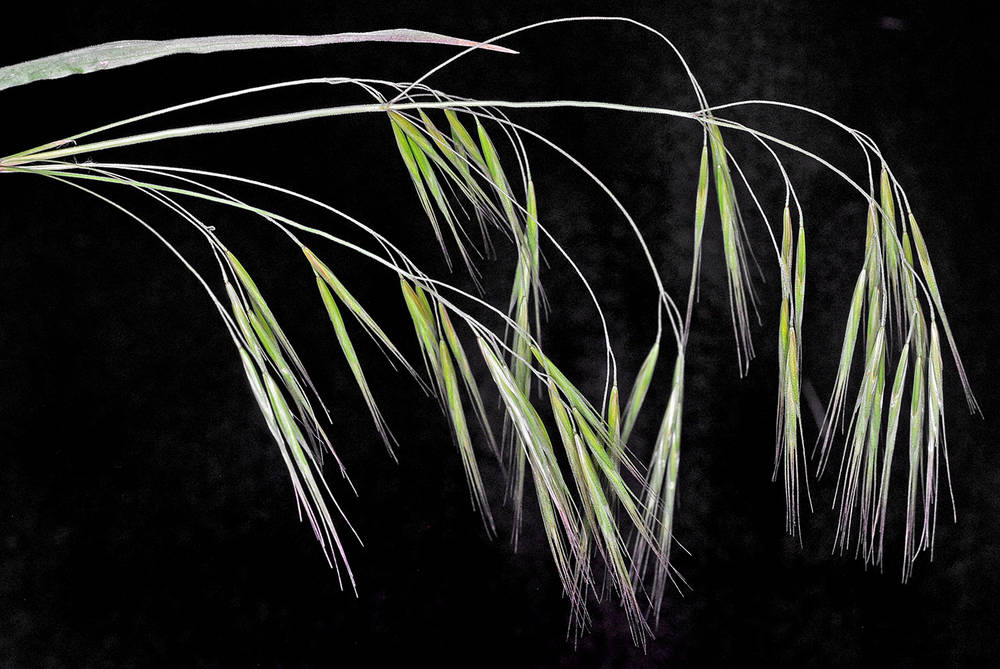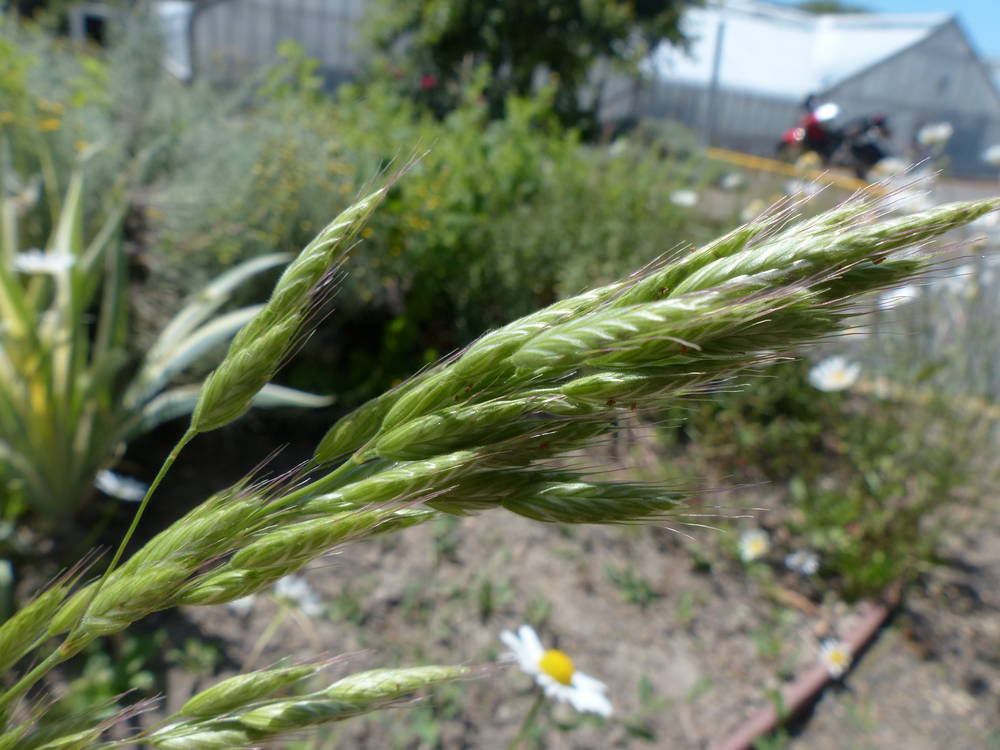Bromus tectorum
Bromus hordeaceus
cheatgrass, downy brome, downy chess
soft chess
puberulent.
sheaths densely and softly retrorsely pubescent to pilose; upper sheaths sometimes glabrous;
blades 1–16 cm × 1–6 mm, softly hairy on both surfaces.
lower sheaths densely pilose; upper sheaths pubescent or glabrous;
blades 2–19 cm × 1–4 mm;
lower surfaces glabrous or pubescent;
upper surfaces pubescent.
5–20 × 3–8 cm; open, nodding;
branches 1–4 cm, drooping, 1-sided and longer than the spikelets, usually at least 1 branch with 4–8 spikelets.
1–13 × 1–4 cm; erect, usually ovoid; open at anthesis, becoming contracted and dense, occasionally reduced to 1 or 2 spikelets;
branches usually shorter than the spikelets, ascending to erect; straight or nearly straight.
10–20 mm, moderately laterally compressed, not densely crowded, 4–8 florets.
(11)14–20(23)mm, lanceolate; terete to moderately laterally compressed, 5–10 florets;
floret bases usually concealed at maturity;
rachilla internodes concealed at maturity.
villous, pubescent, or glabrous;
lower glumes 4–9 mm, 1-veined;
upper glumes 7–13 mm, 3–5-veined.
pilose to glabrous;
lower glumes 5–7 mm, 3–5-veined;
upper glumes 6.5–8 mm, 5–7-veined.
equal to or shorter than paleas; thin, weakly inrolled to flat.
9–12 mm, lanceolate, glabrous or pubescent to pilose, 5–7-veined;
tips acuminate; hyaline; bifid, with teeth 0.8–2(3)mm, awned;
lemma awns 10–18 mm; straight.
6.5–11 × 3–5 mm, lanceolate, chartaceous, antrorsely pilose to pubescent, occasionally glabrous near the base or throughout, 7–9-veined; hyaline margins abruptly or bluntly angled, not inrolled at maturity;
lateral veins prominent, thickened and raised;
tips rounded to acute; bifid;
teeth shorter than 1 mm;
lemma awns 6–8 mm, usually arising less than 1.5 mm below the lemma tips; straight to recurved at maturity.
0.5–1 mm.
0.6–1.5(2)mm.
=14.
=28.
Bromus tectorum
Bromus hordeaceus
Disturbed areas, sagebrush steppe, degraded grasslands, roadsides. 0–2400 m. BR, BW, Casc, Col, CR, ECas, Lava, Owy, Sisk, WV. CA, ID, NV, WA; throughout North America; worldwide. Exotic.
Bromus tectorum is a relatively short grass with drooping inflorescences. Similar B. sterilis and B. diandrus have longer glumes, lemmas, and awns, and spikelets that hang down at a shallower angle than those of B. tectorum. The introduction of B. tectorum to shrub steppe habitats during a time of massive overgrazing in the late 1800s has made restoration of native plant communities difficult or impossible, even where grazing no longer occurs. Fast-growing B. tectorum seedlings outcompete slower growing native grass seedlings for water in drying soils. At maturity, the awns make B. tectorum unpalatable to livestock.
Disturbed areas, degraded grasslands. 0–1900m. All ecoregions except BR. CA, ID, NV, WA; north to AK, south to Mexico, east to Newfoundland and SC; North Africa, southern Europe; scattered elsewhere worldwide. Exotic.
Bromus hordeaceus has been divided into subspecies, two of which may occur in Oregon (B. h. ssp. hordeaceus and B. h. ssp. pseudothominei). Most Oregon specimens, however, cannot be identified confidently to either subspecies.
Barbara Wilson, Richard Brainerd, Nick Otting
Barbara Wilson, Richard Brainerd, Nick Otting
- Local floras:
BC,
CA,
OR,
WA
- Local Web sites:
CalFlora,
CalPhotos,
Flora NW,
PNW Herbaria
WildflowerSearch
iNaturalist (observations)
USDA Plants Database
- LBJ Wildflower Center
- SEINet
- Plants of the World Online
- Encyclopedia of Life
- Wikipedia
- Google Image Search
- Local floras:
BC,
CA,
OR,
WA
- Local Web sites:
CalFlora,
CalPhotos,
Flora NW,
PNW Herbaria
WildflowerSearch
iNaturalist (observations)
USDA Plants Database
- LBJ Wildflower Center
- SEINet
- Plants of the World Online
- Encyclopedia of Life
- Wikipedia
- Google Image Search





